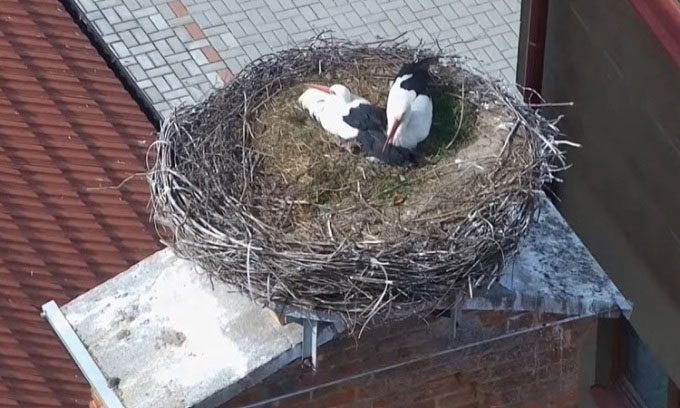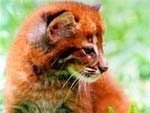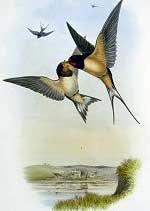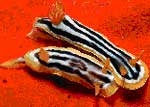Ornithologists Surprised by Discovery of Two Female Storks Sharing a Nest and Taking Turns Incubating Eggs.
A female stork found a suitable mate, surprising experts. After they paired up for a few days, ornithologists realized that both were female. The nest is located across from the Holy Trinity Church in Chýnov, a town in the Czech Republic, and has been closely monitored by a group of ornithologists since early March through a webcam, Newsweek reported on May 18.

Two female storks living together and taking turns incubating eggs. (Photo: CAM Chýnov)
The story began on March 19 when a female stork, who raised three chicks in the area last year, returned to the nest. Local ornithologist Michael Strnad, who specializes in monitoring the nest, named her Loňská. Three days later, another stork with a black spot on her ear visited Loňská but was immediately chased away.
For two weeks, the stork named Loňská rejected any suitors and pecked at numerous eager males. On April 11, the black-spotted stork returned and persistently pecked at Loňská’s beak until she was allowed to enter the nest. The pair spent the night together and mated continuously for the next six days. Strnad named the second stork Jupiter.
On April 17, an egg appeared in the nest. The next day, Loňská laid a second egg. Strnad noted that this was unusual, as storks typically lay eggs continuously. However, on the following evening, Jupiter sat on the egg at 9:23 PM. When she stood up at 9:30 PM, there were three eggs underneath her. This led Strnad to realize that Jupiter was also a female stork.
From then until April 24, the two female storks took turns laying eggs each night. The pair laid a total of eight eggs and alternated caring for the nest. The female storks will incubate until mid-May when the chicks are expected to hatch. “It will be interesting to see if any of the eggs hatch because of the pairing of the storks in the nest, as there is a high likelihood that the eggs are not fertilized,” the ornithologist stated.
Same-sex pairing is relatively common in bird species, with over 130 species displaying this behavior at least on several occasions, according to Zdeněk Vermouzek, director of the Czech Ornithological Society. Sometimes, these pairs even raise chicks together.
Same-sex pairing between two females is most common in species with lifelong relationships, where both parents participate in raising the young. Most storks do not mate for life; instead, they stay with a partner at the beginning of each breeding season. However, this is the first known case of same-sex pairing among white storks. Ornithologists will continue to monitor the nest until the eggs hatch.





















































